Twelve weeks. That’s all it takes for regular jump rope sessions to reshape your body composition, according to National Library of Medicine research. This simple tool isn’t just for schoolyards – it’s a powerhouse for building strength while sharpening coordination and heart health.
When you swing that rope, your legs become calorie-torching engines. Calf muscles fire with every spring-loaded push-off, while thighs and glutes stabilize each landing. Your core tightens like a natural weight belt, and shoulders get a stealth workout controlling the rope’s rhythm.
What makes this exercise stand out? Efficiency. Unlike isolated weight training, you’re engaging multiple areas at once – turning cardio into muscle-building magic. Fitness coaches love it because you can’t fake the movements; your body works as one connected system.
Best part? You don’t need fancy equipment or hours at the gym. Just three 20-minute sessions weekly can kickstart changes. Whether you’re aiming for toned arms or explosive leg power, that spinning cord becomes your personalized trainer.
Key Takeaways
- Regular rope sessions improve muscle-to-fat ratio in 12 weeks
- Activates calves, thighs, glutes, shoulders, and core simultaneously
- Enhances coordination while building cardiovascular endurance
- Requires minimal equipment for maximum full-body impact
- Supports strength goals through compound movement patterns
Overview of Jump Rope Workouts and Their Benefits
Rhythmic skipping transforms exercise into a full-body symphony. Each rotation builds stamina while sculpting lean tissue – a rare combo in fitness. Research shows this activity burns 25% more calories per minute than stationary biking.
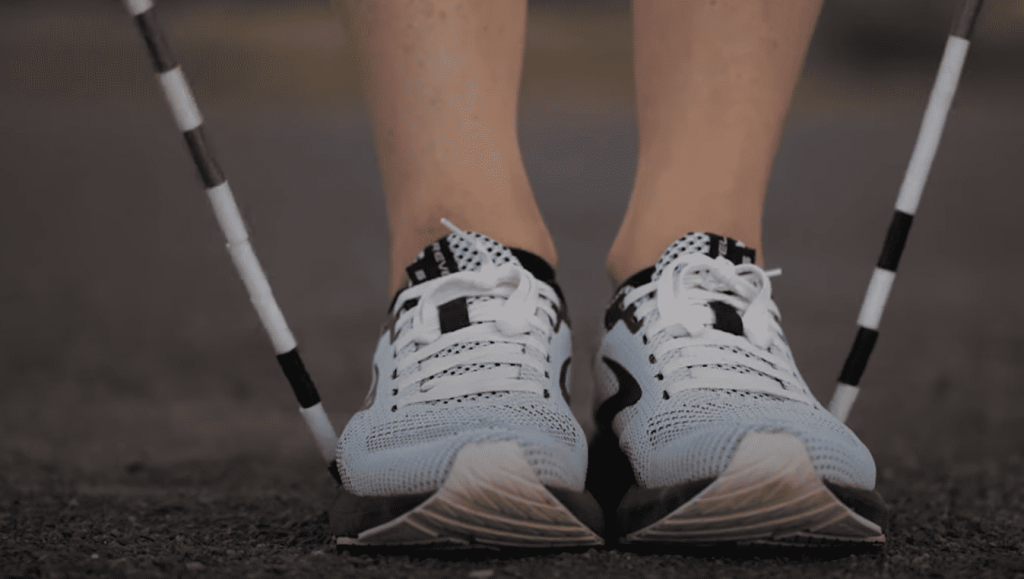
Heart Pump Meets Muscle Tone
Sustained sessions spike heart rates to cardio training zones, strengthening circulation. The constant spring-load motion in ankles activates fast-twitch fibers, while shoulder rotations build endurance. Studies reveal 10 minutes daily improves lung capacity comparably to 30-minute jogs.
Adaptable Training for All Levels
From basic bounces to crossover tricks, difficulty scales effortlessly. Physical therapists often recommend modified versions for joint rehabilitation. Busy professionals use 5-minute bursts between meetings for metabolic boosts.
| Exercise | Calories/Hour | Equipment Needed | Skill Curve |
|---|---|---|---|
| Jump Rope | 700-1000 | Single rope | Low to High |
| Running | 600-800 | None | Moderate |
| Cycling | 400-600 | Bicycle | Low |
| Swimming | 500-700 | Pool access | High |
The rhythmic nature enhances neural pathways, improving reaction times. Many athletes report better focus during competitions after regular sessions. It’s meditation in motion – combining physical exertion with mental clarity.
Muscle Enhancement Through Jump Rope
Athletes chasing peak performance often overlook one tool that bridges strength and stamina. That spinning cord in your hands? It’s secretly engineering a more resilient physique. Research reveals how rhythmic leaping sessions trigger adaptations that weight racks alone can’t match.
Building Stamina & Sudden Bursts
Extended sessions at moderate intensity forge muscular endurance like nothing else. Your calves and shoulders become metronomes – contracting hundreds of times per minute without fatigue. “Consistent repetition teaches muscles to conserve energy while maintaining output,” explains a UCLA sports scientist.
Want raw power? Try sprint intervals. Explosive double-unders or high knees activate fast-twitch fibers, priming your body for sudden bursts. This dual approach – endurance meets explosiveness – creates athletes ready for unpredictable challenges.
Weighted Ropes Rewrite the Rules
Swap standard cords for thicker models, and everything changes. Heavier ropes force your arms and core to stabilize against increased drag. Studies show users gain 15% more muscle mass in shoulders and forearms compared to traditional routines.
Three ways to level up:
- Start with 0.5 lb ropes to refine technique
- Alternate between speed sessions and resistance days
- Combine weighted rotations with squat jumps for full-system engagement
This isn’t just cardio with benefits – it’s strength training disguised as play. Your rope workout routine becomes a chameleon, adapting to whether you need marathon stamina or sprinter’s reflexes.
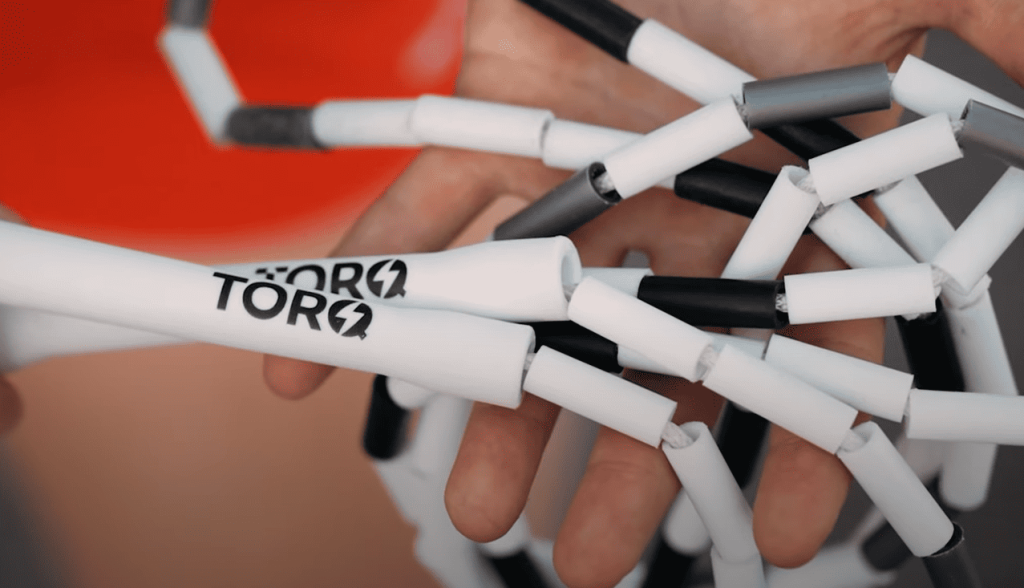
what muscles does jump rope work
Think of your body as an orchestra during skipping sessions – every section plays its part in perfect harmony. This dynamic activity lights up your entire physique, from ankles to shoulders, creating a symphony of muscle activation that few exercises match.
Primary Muscle Groups Engaged
Your lower half becomes a spring-loaded powerhouse. Calves propel each takeoff, while thighs and glutes control landings like shock absorbers. Core muscles tighten instinctively, acting as your body’s natural stabilizer belt.
Upper regions get equal attention. Shoulders and arms guide the rope’s rhythm, building endurance with every rotation. Back muscles join the party too, maintaining posture that keeps movements efficient. It’s this full-system collaboration that makes skipping a standout for overall conditioning.
How Jumping Targets Both Upper and Lower Body
Proper technique turns simple bounces into precision training. Land softly on the balls of your feet, and calves work overtime. Keep elbows close, and watch shoulders sculpt themselves through repetitive rotations.
“The magic happens when upper and lower halves coordinate,” notes a NASM-certified trainer. Your core bridges these regions, transferring power from legs to arms. This interconnected effort explains why regular sessions improve agility better than isolated workouts.
Three keys to maximize results:
- Maintain upright posture to engage back muscles
- Use wrist-driven rotations for shoulder endurance
- Land with bent knees to activate thigh stabilizers
Lower Body Focus: Calves, Quads, and Glutes
Your legs transform into coiled springs during skipping sessions. Each leap activates a kinetic chain from ankles to hips, creating natural resistance training. The American Council on Exercise confirms this motion strengthens tendons around key joints – a hidden benefit beyond visible muscle growth.
Calf Muscles: Gastrocnemius and Soleus Benefits
Two silent heroes power every upward burst. The gastrocnemius generates explosive lift-off, while the soleus handles micro-adjustments mid-air. “They’re like twin engines – one for thrust, the other for precision steering,” describes a physical therapist. Regular practice thickens these tissues and improves foot strike mechanics.
Engaging Hamstrings, Quads, and Glutes During Jumps
Landing phases reveal the supporting cast. Thigh muscles engage to absorb impact, protecting knees from stress. Glutes fire to keep hips level, especially during lateral moves or single-leg variations. Try these tweaks:
- Pause briefly at the lowest point of each bounce to activate thighs
- Add occasional high knees to wake up hip flexors
- Rotate feet slightly outward during jumps to target glute medius
Consistent training builds lean tissue while teaching these groups to collaborate. Better coordination means fewer injuries during sports or daily activities. Your legs become smarter, not just stronger.
Upper Body Strength: Shoulders, Arms, and Back
Volleyball players spike harder, rock climbers grip longer – elite athletes share a secret weapon hiding in your gym bag. That simple cord becomes a sculptor for your torso, building endurance where it matters most. “Rotational control translates directly to performance,” notes research from the Journal of Sports Rehabilitation.
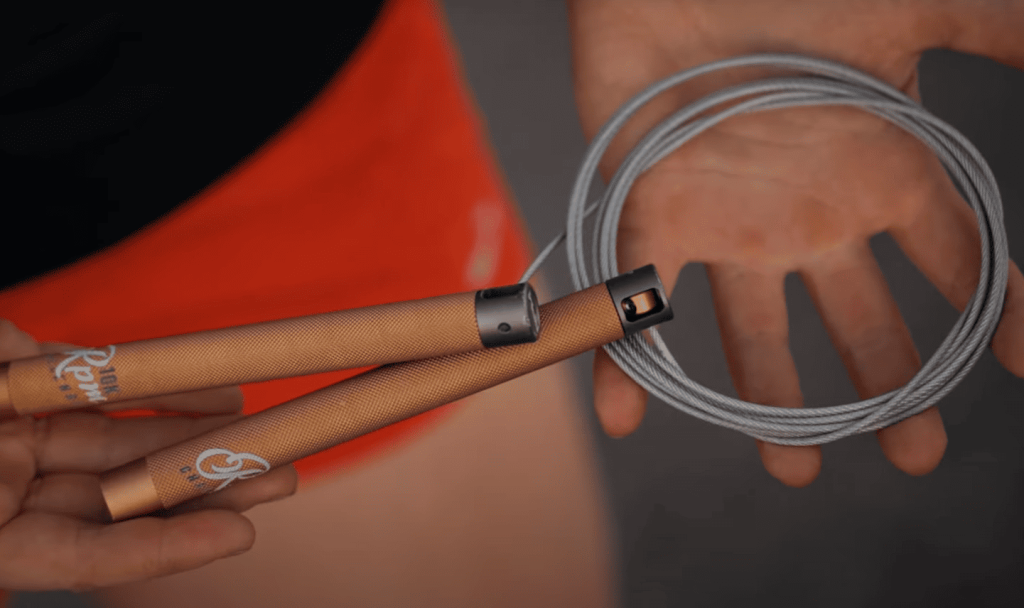
Building Shoulder Stability and Rotation Control
Keep elbows glued to your ribs and palms facing upward. This position turns each rotation into a precision drill for shoulder stability. Your deltoids and rotator cuff muscles learn to work together, reducing injury risks during overhead motions.
Three form tweaks boost results:
- Maintain 90-degree elbow bends for optimal leverage
- Initiate rotations from wrists, not arms
- Visualize drawing circles with your pinky fingers
Strengthening the Arms and Developing Grip
Your hands become iron vises through constant tension management. Studies link grip strength to bone density and longevity – every minute you spin that cord adds armor to your forearms. Back muscles like the trapezius engage automatically to maintain posture.
| Exercise | Shoulder Activation | Grip Demand | Back Engagement |
|---|---|---|---|
| Jump Rope | High | Extreme | Moderate-High |
| Rowing Machine | Medium | Low | High |
| Push-Ups | Low | None | Low |
| Pull-Ups | High | High | Extreme |
Heavier ropes amplify results by 22% according to biomechanics studies. Start light, then progress to weighted models once your form becomes second nature. Your upper body strength grows with every controlled revolution.
Core Stabilization and Balance Improvement
Your midsection isn’t just along for the ride – it’s the command center directing every leap. Proper technique turns each rotation into a stealth workout for your torso, building stability that radiates through every movement. Studies show eight weeks of focused engagement can sharpen coordination better than isolated ab exercises.
Activating Abdominal Muscles for Better Posture
Imagine your core as a corset tightening with every bounce. Deep stabilizers and obliques fire continuously to prevent sideways sway. This constant tension creates a natural shield for your spine while teaching muscles to work as a unified team.
Three keys to unlock hidden potential:
- Exhale sharply on each jump to maintain internal pressure
- Visualize pulling belly button toward your backbone
- Keep ribs stacked over hips to avoid arching
Balance challenges emerge when you vary foot patterns. Single-leg hops or crisscross motions force your body to recalibrate mid-air. “This improves proprioception – your internal GPS for movement,” explains a NASM-certified trainer. The result? Better performance in sports requiring sudden direction changes.
Pair controlled breathing with precise jumps to sustain energy. Inhale through the nose for two rotations, exhale forcefully for one. This rhythm maintains core engagement without oxygen debt. Your posture transforms as these techniques become automatic – shoulders relaxed, spine aligned, power flowing freely.
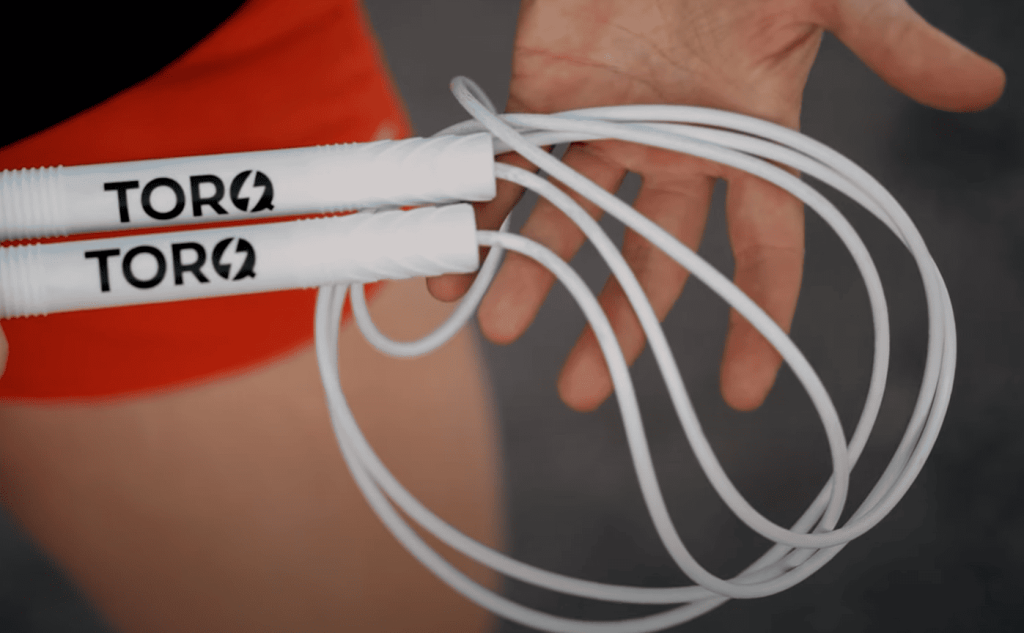
Advanced Techniques: HIIT, Tabata & Weighted Rope Variations
Transform basic rotations into elite conditioning with three game-changing methods. These protocols turn rhythmic patterns into metabolic powerhouses, pushing your limits while respecting your schedule.
Fueling Progress With Strategic Intervals
HIIT protocols alternate between all-out efforts and active recovery. Try 30 seconds of maximum-speed rotations followed by 60 seconds of marching in place. This approach spikes calorie burn for hours post-workout while maintaining muscle engagement.
Research shows alternating intensities boosts growth hormone production by 24%. Your body becomes a furnace – torching fat while preserving lean mass.
Four-Minute Power Surges
Tabata’s 20/10 second formula delivers condensed results. Eight rounds of explosive double-unders followed by brief rests create unmatched EPOC (excess post-exercise oxygen consumption). “It’s like compressing an hour’s workout into a coffee break,” notes a certified strength coach.
Resistance Revolution
Weighted jump ropes ranging from 0.5-2 lbs force muscles to adapt. Thicker cables increase drag, demanding greater control from shoulders to fingertips. Benefits multiply when combined with footwork variations:
- Alternate heavy and light ropes weekly
- Pair weighted rotations with lateral hops
- Use slower tempos to emphasize muscle tension
These tools build armor-like endurance – boxers use them for championship-round stamina. Start with 1-minute intervals, gradually increasing duration as grip strength improves.
Choosing the Right Rope: Weighted vs. Normal
Your equipment choice becomes the conductor of your workout symphony. Weight distribution in ropes alters how your body responds – lighter models sing with speed, while heavier versions compose strength-building ballads. This decision impacts everything from calorie burn to joint stress.
Differences in Weight, Speed, and Difficulty
Standard ropes (0.1-0.3 lbs) glide effortlessly, letting you hit 150+ rotations per minute. Weighted models (0.5-2 lbs) slow rotations by 18-35% while increasing upper body demands. Thicker cables create air resistance that transforms basic skips into resistance training.
| Feature | Normal Rope | Weighted Rope |
|---|---|---|
| Rotation Speed | Fast | Moderate |
| Muscle Focus | Coordination | Strength |
| Cost Range | $8-$25 | $30-$80 |
| Learning Curve | Beginner-Friendly | Intermediate+ |
Selecting the Best Rope Based on Your Fitness Goals
Newcomers should master timing with basic cables first. “You wouldn’t bench press 200 lbs on day one,” says CrossFit coach Dana Lee. Weighted options shine when you need:
- Shoulder and forearm development
- Enhanced grip endurance
- High-intensity interval challenges
Consider handle ergonomics – contoured grips reduce fatigue during marathon sessions. Nylon ropes last longer than PVC for frequent users. As skills improve, blend both types: use lightweight models for footwork drills and heavy cables for strength cycles.
Integrating Jump Rope into Your Fitness Routine
Your current fitness plan just gained a versatile partner. This dynamic tool bridges cardio and resistance work, creating synergy between different training styles. Whether you lift weights three times weekly or prefer bodyweight workouts, rhythmic rotations enhance results without overcrowding your schedule.
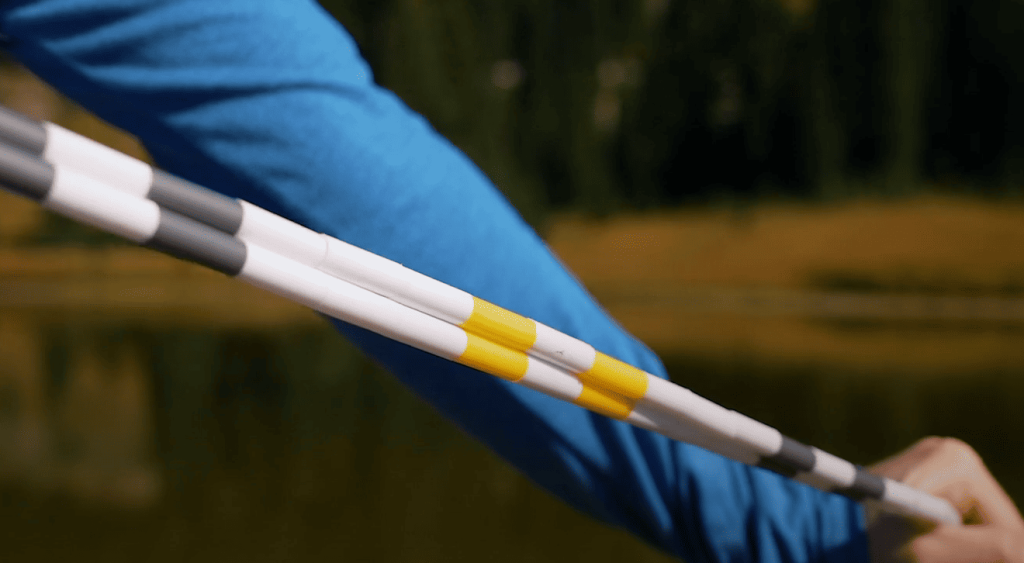
Smart Programming for Balanced Gains
Pair jumping sessions with strength training on alternate days to let muscles recover. Morning exercisers benefit from 5-minute warm-ups to activate stabilizers before squats or presses. Evening warriors use quick sessions to decompress after desk work.
Three seamless integration strategies:
- Replace treadmill warm-ups with 3-minute speed intervals
- Add weighted rope circuits between weightlifting sets
- Use recovery days for low-intensity footwork drills
Track progress through weekly challenges – increase revolutions per minute or master new skills like side swings. This approach keeps workouts fresh while building full-body coordination. Your routine evolves alongside your capabilities, proving fitness growth needs creativity as much as consistency.

